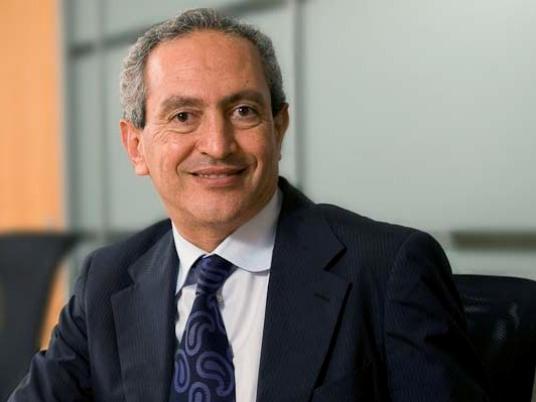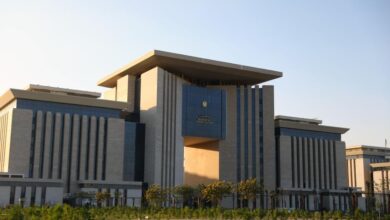
In a response to the US President Donald Trump's recent visa ban on citizens from or born in seven countries in the Middle East and Africa, the Harvard Business Review (HBR) published a study documenting how Arab inventors' contributions to the country and major US tech companies have increased dramatically over the last 15 years.
The research said Arab inventors showed technological specialization in various fields, including information and communication technologies, and they are "over-represented" in electrical and communication technology, computing, calculating, counting and large fields of medical and veterinary sciences.
“It turns out that the US is a major home for Arab inventors,” the HBR said.

The study showed that from 2009 to 2013, there were 8,786 US patent applications in their data set that included at least one Arab inventor. “Out of the total US patent applications, 3.4 percent had at least one Arab inventor, despite the fact that Arab inventors represent only 0.3 percent of the total population, but as patents usually have multiple inventors, and Arab inventors often patent jointly with non-Arabs, 2,962 patents, or 1.2 percent, can be contributed exclusively to Arab inventors,” the study said.
It gave California an example. The state had 1,134 patents and more patent filings by Arab inventors than any country outside the US which serves as a home for more than one-third of PCT patent applications from Arab inventors in the US and about 16 percent of all Arab patents worldwide.
The HBR research showed that not only is the US the main home of Arab inventors, as the number of Arab patents hiked 62 percent over the last 10 years, jumping from 1,826 patent applications in the period between 1999–2003 to 2,962 applications in the period from 2009–2013, but also that this growth rate was about 2.6 times higher than the respective growth rate of 40 percent for total US patenting in the same time period.

Among countries that followed the US, was France with 513 patent applications, 361 in Canada, 342 in Germany, 307 in Saudi Arabia, 279 in Japan and 273 in the UK.
"Europe is also home to Arab inventors, but far fewer. There were only 1,424 patent applications from the 28 EU countries that included an Arab name associated with them," the study said.
Meanwhile, the study mentioned the contribution of Arab inventors to America’s tech scene and their strong precense in Silicon Valley, Boston and other places. It mentioned names of well-known Arab entrepreneurs including Amr Awadalla, the Egyptian-born American computer scientist and co-founder of Cloudera, the US-based software company that provides Apache Hadoop-based software, support and services and training to business customers.
It also mentioned Ayah Bdeir, founder and CEO of LittleBits; Egyptian Rana el-Kaliouby, founder of Affectiva; Sharif el-Badawi of TechWadi; Mo Gawdat of Google; and Oussama Khatib, director of the Stanford Robotics Lab. “They are few examples of Arab immigrants making major contributions to America’s innovation scene,” it said.
The study shed light on immigration issues that are faced by Arab inventors who weren’t born in the US, saying that skilled Arab immigrants are more likely than other major ethnic groups to arrive in the US on a non-skilled visa. It explained that Arabs and people from the Middle East and North Africa in general do not benefit much from the H-1B visa which is a non-immigrant visa that allows US employers to temporarily hire foreign workers in specialty occupations.
“They are collectively receiving fewer than 10 percent of total visas granted to foreign-born skilled workers. While there were around 108,000 students from the Middle East and North Africa in the US in 2016, people from these regions are not among the top recipients of PhDs at US universities,” the study says.
The study suggested that the bulk of Arab inventors are residing at the US through other immigration channels, such as family reunion and as refugees which explains the immigration debate going on in the US.
It moreover showed that in 2013 there were approximately 1.02 million immigrants from Arab countries staying in the United States, representing 2.5 percent of the nation’s 41.3 million immigrants. About 43 percent of Arab immigrants aged 25 and older had a bachelor’s degree or higher — more than the 28 percent of all immigrants and 30 percent of native-born adults who do.
Finally the study believed that the recent visa ban will weigh badly on the American and foreign companies in the US, especially those with R&D operations, saying that the management of R&D projects will become more difficult and less efficient as the movement of personnel between firms’ US and international sites becomes more complicated.
“Furthermore, projects’ staffing as well as companies’ hiring could become extra sensitive to the potential risk of denial of entry to the US, putting logistical conveniences ahead of merit, efficiency, and effectiveness. Finally, both domestic and international companies will have a greater incentive to relocate some of their R&D activities to outside the US in order to avoid the hassles associated with border crossing in and out of the US,” it said.




